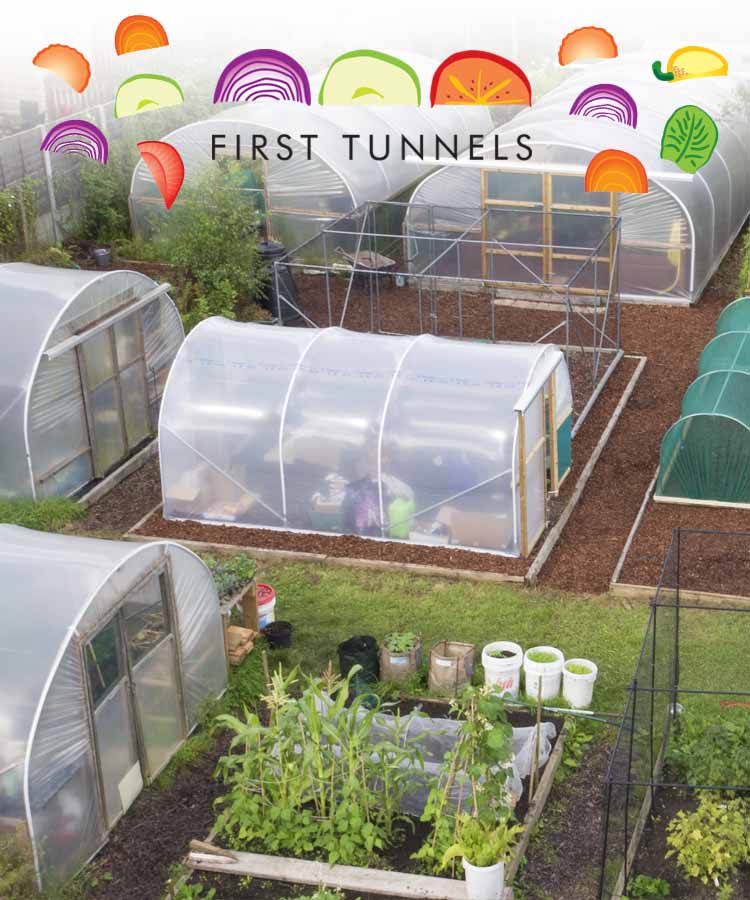Polytunnels are, today, becoming a ubiquitous sight across the UK and in many other parts of the world. They are used on farms, large and small, and are popping up in many domestic gardens. The usefulness of polytunnels is becoming fully recognised, and technological and farming advancements are showing that polytunnels will likely play a role in the future of food production in the face of the global challenges that we all face – the challenges of a changing climate, weather extremes and an ever growing population.
When exactly polytunnels (in their earliest form) first appeared on the scene is difficult to pinpoint. But it seems clear that plastic covered hoop houses, or polytunnels as they are now called, have been around since at least the 1940s. Polyethylene was first synthesised in the late 19th Century and over the first half of the 20th Century, with a hiatus for the Second World War, the processes in plastic creation were refined and the many applications of this material began to be seen.
In the second half of the 20th Century, plastics such as polyethylene began to take over the world. Decade by decade, plastics crept into our food growing practises – each decade seeing an increase in the use of this type of material, in preference to the more expensive glass and ceramics that were used in the past. Polytunnels were still an uncommon site in the UK countryside, but year on year, plastics became more refined and the technologies of growing food under cover were refined and improved.
Towards the end of the 20th Century and into the 21st, globalisation meant that food travelled more and more freely from all over the world. Consumers became used to choice, and to eating more exotic foods than had hitherto been commonly enjoyed. Food travelled, often great distances, to reach our plates.
There was, however, a backlash to this growing consumerism and global food trade. The issue of climate change came to the fore – more and more people became aware of the damage we are doing to our planet - and local food movements, and the organic food movement, sought (and still seek) to redress the imbalance and make food production more sustainable.
As governments and individuals began to return to more local food production, though without wanting to forfeit the choices that come with global food distribution, polytunnels have increasingly had a more and more important role to play. Polytunnels allow farmers in the UK and elsewhere around the world, to grow foods that might not normally thrive in their local environments, and to be more resilient to extreme weather events and the normal passing of the seasons. Home growers also increasingly saw the benefits of being able to grow their own food year round.
Time marches on and yet polytunnels show no sign of any dip in popularity. Indeed, they only become more common as food security becomes an ever more pressing concern. It is clear that polytunnels will have their role to play in feeding our planet over the coming years.
